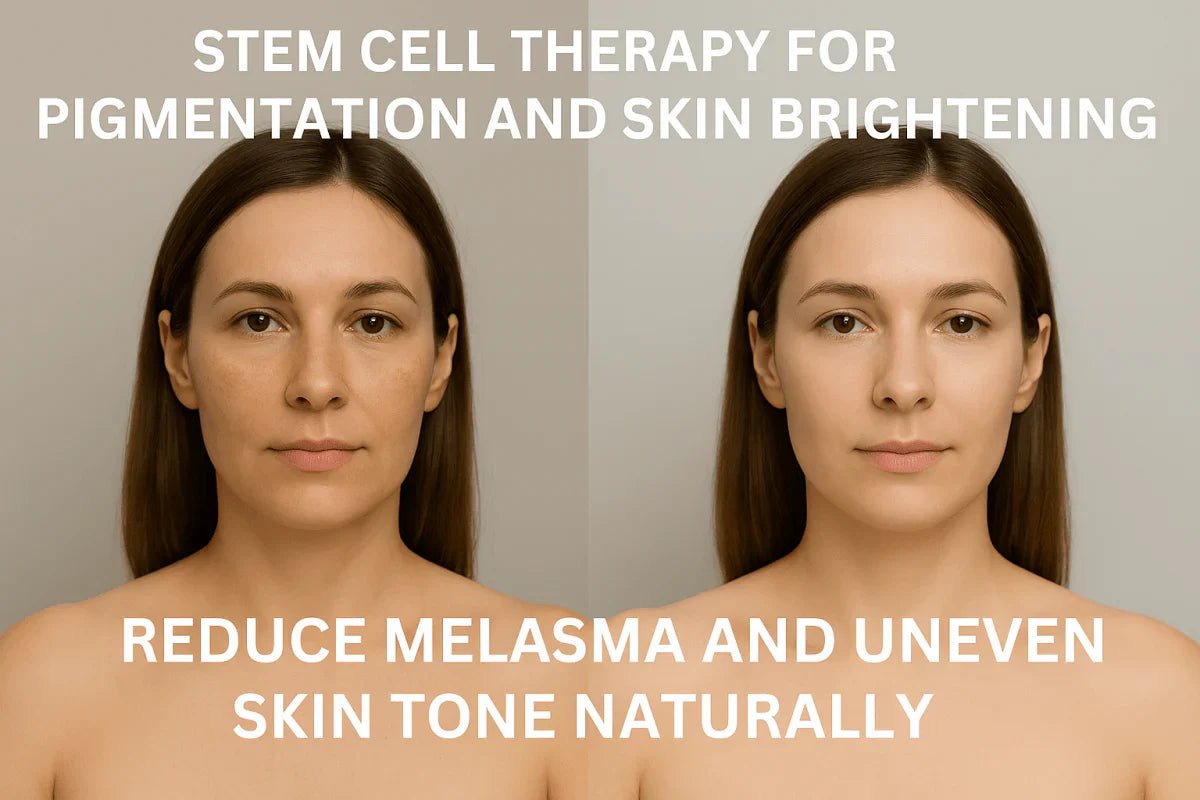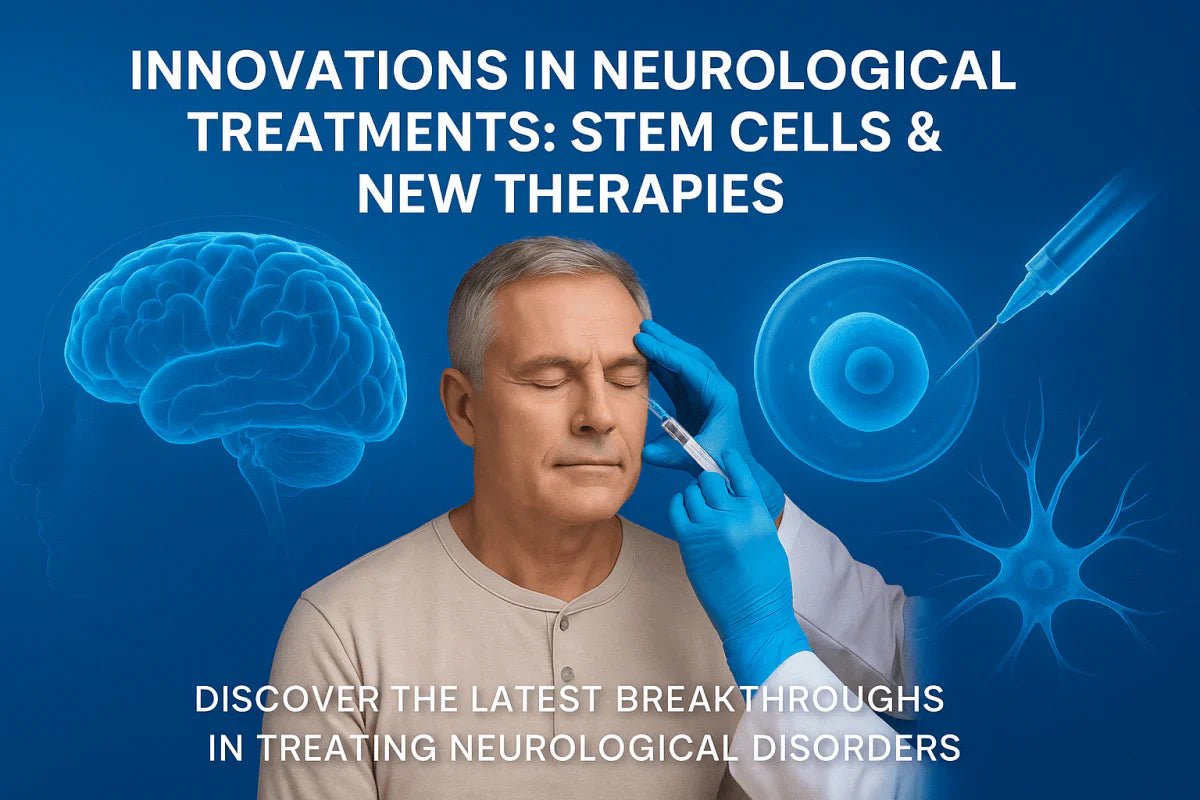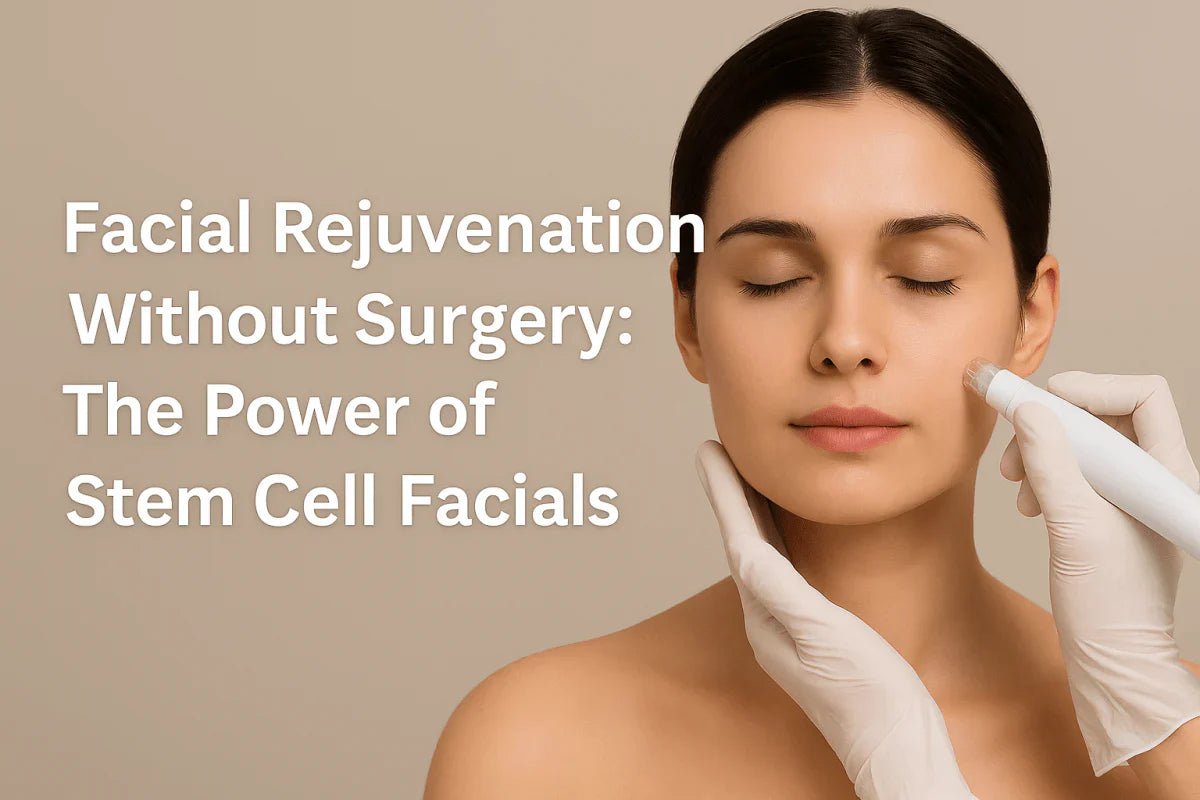
Stem Cells for Melasma, Hyperpigmentation & Skin Tone Correction
Uneven skin tone, hyperpigmentation, and melasma affect millions of people worldwide. For many, these conditions are more than cosmetic; they impact confidence, self-esteem, and quality of life. Conventional treatments—like chemical peels, lasers, or whitening creams—often provide limited or temporary results. Worse, some can irritate sensitive skin or cause rebound pigmentation.
A new solution is emerging in the world of advanced aesthetics: stem cell therapy. Backed by regenerative science, stem cells offer a powerful, natural approach to treating pigmentation at the root cause—by repairing damaged skin from within. At Healthi-Life Longevity Center in Bangkok, stem cell-based protocols are helping patients achieve brighter, more even-toned skin safely and effectively.
This article will explore how stem cell therapy works for pigmentation issues, who can benefit, and why it’s becoming the preferred option for long-term skin correction.
Understanding Melasma and Hyperpigmentation
Pigmentation disorders develop when melanocytes (the skin cells that produce melanin) become overactive or damaged. This leads to dark patches, blotchy skin, or widespread discoloration.
Melasma is one of the most common forms of hyperpigmentation, particularly among women. It often appears as:
- Brown or gray-brown patches on cheeks, forehead, or upper lip
- Symmetrical patterns that worsen with sun exposure
- Fluctuations during pregnancy or hormonal changes
Other forms of pigmentation include:
- Post-inflammatory hyperpigmentation (PIH) after acne, laser, or injury
- Sunspots (solar lentigines) from UV exposure
- Freckles (ephelides), often genetic
While not dangerous medically, pigmentation can cause significant emotional distress, especially when resistant to topical treatments.
Why Traditional Treatments Often Fail
Conventional options for pigmentation include:
- Topical bleaching agents (hydroquinone)
- Retinoids
- Vitamin C serums
- Chemical peels
- Fractional lasers
- Intense pulsed light (IPL)
These approaches target melanin production or surface pigment removal. However, they rarely address the underlying cellular dysfunction driving excess pigment production. In many cases, results are temporary, and repeated treatments can lead to skin thinning or rebound hyperpigmentation.
Patients with darker skin tones often face higher risks of side effects, making gentle yet effective alternatives urgently needed.
The Cellular Roots of Hyperpigmentation Imbalance
To understand why stem cells are different, we must explore how pigmentation becomes disrupted at the cellular level:
- Inflammation: Chronic skin inflammation stimulates melanocytes.
- Oxidative Stress: UV damage creates free radicals that trigger melanin overproduction.
- Hormonal Imbalance: Estrogen fluctuations influence pigment activity.
- Barrier Dysfunction: Weak skin barriers allow more environmental stress.
- Mitochondrial Dysfunction: Aging skin loses cellular energy to repair damage.
Stem cell therapy works by targeting these root causes, not just masking the pigment.
What Are Stem Cells?
Stem cells are master repair cells found naturally in the body. They have the unique ability to transform into different types of cells and release healing signals that promote tissue regeneration.
In aesthetic medicine, mesenchymal stem cells (MSCs)—particularly those derived from umbilical cord tissue—are used because of their powerful anti-inflammatory and anti-aging properties.
When applied to skin rejuvenation, stem cells:
- Release growth factors that repair damaged tissue
- Reduce inflammatory signals that trigger pigmentation
- Stimulate collagen and elastin production
- Improve circulation and nutrient delivery to skin cells
- Regulate melanocyte activity to normalize pigment production
This multi-layered approach leads to brighter, healthier, more resilient skin—naturally.
How Stem Cell Therapy Treats Hyperpigmentation
Unlike bleaching creams or lasers that only target surface pigment, stem cell therapy operates at a deeper biological level.
Here’s how:
1. Reducing Inflammation
Chronic skin inflammation often drives hyperpigmentation. Stem cells release anti-inflammatory cytokines that calm the overactive immune response contributing to pigment formation.
2. Repairing Melanocyte Function
Stem cells help normalize melanocyte behavior, reducing overproduction of melanin without destroying these essential cells.
3. Rebuilding the Skin Barrier
Stronger skin barriers prevent external triggers (UV, pollution) from worsening pigmentation over time.
4. Enhancing Skin Hydration and Collagen
Healthier skin reflects light more evenly, reducing the appearance of dark patches while improving elasticity and texture.
5. Preventing Future Pigment Damage
By reversing oxidative stress and improving skin repair capacity, stem cells help prevent new pigmentation from forming.
Different Delivery Methods for Stem Cell Skin Rejuvenation
At Healthi-Life, we customize protocols based on each patient’s pigmentation type, severity, and skin sensitivity. Multiple delivery options exist:
Stem Cell Facials
Topical application combined with microneedling allows growth factors to penetrate deeply into the dermis.
Exosome Serums
Exosomes (small vesicles secreted by stem cells) deliver targeted messaging to melanocytes and surrounding cells.
Stem Cell IV Therapy
Systemic infusion addresses underlying inflammation and oxidative stress affecting skin tone from the inside out.
Localized Injections
In stubborn pigmentation areas, targeted injections of stem cell-derived growth factors may offer enhanced results.
Ideal Candidates for Stem Cell Hyperpigmentation Therapy
Stem cell-based protocols are suitable for patients who:
- Struggle with melasma unresponsive to conventional treatments
- Have sensitive skin that reacts poorly to peels or lasers
- Experience rebound hyperpigmentation after laser treatments
- Want a more natural approach without harsh chemicals
- Seek prevention alongside correction for long-term brightening
Unlike harsh lightening agents, stem cells work across all skin types and tones, making them especially valuable for darker skin populations more prone to pigment irregularities.
Safety Profile of Stem Cell Skin Rejuvenation
One of the most significant advantages of stem cell therapy is its excellent safety profile.
- Non-toxic and drug-free
- No skin peeling or downtime
- Minimal irritation risk
- Long-term healing vs temporary suppression
At Healthi-Life, all stem cell products are sourced from FDA-compliant, ethically regulated laboratories, processed under sterile conditions, and tailored to each patient’s medical history.
Expected Results: What Patients Experience
Pigmentation improvement occurs gradually as skin regenerates and inflammation subsides. Patients typically report:
- Skin looks brighter and more even after 2–3 sessions
- Melasma patches begin to fade without new ones appearing
- Overall skin texture feels smoother, hydrated, and firmer
- Skin becomes less reactive to sun or environmental stress
Full correction may require multiple sessions spaced over several months, depending on the severity of pigmentation.
Combining Stem Cells with Holistic Skin Optimization
At Healthi-Life, we recognize that true skin rejuvenation involves more than one therapy. Our comprehensive programs often combine:
- IV Nutrient Therapy: Vitamin C, glutathione, NAD+, and antioxidants to reduce systemic oxidative stress.
- Peptide Therapy: BPC-157 and other skin-repair peptides to promote dermal healing.
- Hormone Optimization: Balancing estrogen, thyroid, and cortisol levels to stabilize pigment signaling.
- Gut Health Restoration: Addressing leaky gut and microbiome imbalances that contribute to skin inflammation.
By integrating systemic and local therapies, we address both the skin surface and its internal drivers.
Is stem cell therapy for pigmentation permanent?
Results are long-lasting when combined with lifestyle support and sun protection. However, ongoing maintenance may be recommended to prevent future pigment triggers.
Is there any downtime?
No. Unlike laser or aggressive peels, stem cell facials and IVs have no downtime. Patients can resume daily activities immediately.
Can stem cell therapy prevent hyperpigmentation from returning?
By addressing root causes like inflammation and oxidative stress, stem cell therapy helps reduce the likelihood of recurrence.
How do stem cells help reduce pigmentation?
Stem cells calm inflammation, regulate melanocyte activity, and repair skin damage, leading to more even skin tone over time.
Is stem cell therapy safe for melasma?
Yes. Stem cell-based treatments are safe, gentle, and suitable for all skin types, including patients prone to hyperpigmentation.
How many treatments are needed for visible results?
Most patients see improvement after 3–4 sessions, with full brightening effects developing gradually over several months.
The Science Behind Stem Cells for Hyperpigmentation
Ongoing studies continue to confirm the regenerative potential of stem cells for dermatological applications. Research highlights include:
- Reduced expression of MITF (the master gene controlling melanin production)
- Increased collagen types I and III, improving skin structure
- Enhanced angiogenesis (new blood vessel formation), which supports healthier skin tone
- Lowered inflammatory cytokines, calming hyperactive immune responses
- Modulation of tyrosinase activity, reducing melanin overproduction safely
These mechanisms offer a level of sophistication not achievable with conventional bleaching agents.
Why Bangkok’s Healthi-Life Clinic Stands Out

At Healthi-Life Longevity Center in Bangkok, we specialize in cellular-based aesthetic medicine using:
- Fresh mesenchymal stem cells with high viability
- Medical-grade exosome serums for topical and injectable use
- Functional diagnostics to customize your treatment
- Luxury-level medical care designed for international patients
- Multidisciplinary expertise combining aesthetic dermatology and regenerative medicine
We don’t treat symptoms. We treat the root cause.
Take Control of Your Skin Health
Hyperpigmentation does not have to be a lifelong struggle. With regenerative tools like stem cells, melasma and hyperpigmentation can now be addressed with precision, safety, and long-term results.
If you’re frustrated with temporary fixes and ready for a solution that heals your skin from the inside out, stem cell therapy offers a new path forward.
Book your private consultation today at Healthi-Life Longevity Center Bangkok.
Let’s rebuild your skin’s natural glow—cell by cell.


